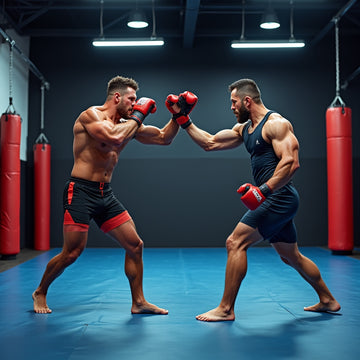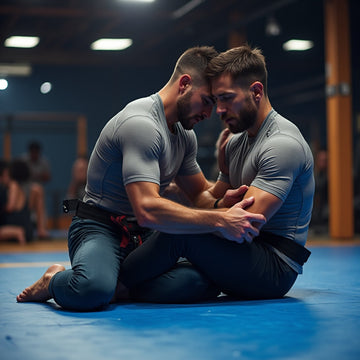A rash guard is a stretch-fit top made from moisture-wicking, quick-dry fabrics that shield your skin from chafing, UV rays, and minor abrasions during water or contact sports. It’s your first line of defense under the blazing sun or on rough mats.
Why Wear a Rash Guard?
If you’ve ever felt the sting of sandpaper-like salt spray or dreaded a wardrobe malfunction in open water, you know why a rash guard matters. It’s more than a fashion statement. It’s a protective layer that cuts friction, fights UV damage—often with UPF 50 rating—and keeps you comfy whether you’re surfing sugar-white breaks or rolling on tatami mats.
Honestly, even a quick pool session benefits from a lightweight cover-up that wicks away sweat and chlorine. For surfers, lifeguards, coaches, kayakers, and scuba divers, it’s a game-changer. And if you’re grappling or into MMA, that snug compression feel can boost blood flow and muscle recovery.
Here’s the thing: a rash guard isn’t just a T-shirt you swim in. It’s specialized gear, engineered for performance and protection.
Types of Rash Guards
Rash guards come in three main silhouettes: long sleeve, short sleeve and sleeveless. Each serves a slightly different crowd.
- Long Sleeve: Offers full-arm coverage for UV protection, great for surfing under intense sun or cooler water.
- Short Sleeve: Balances mobility and coverage—ideal for swimmers and those who prefer less heat retention.
- Sleeveless: Perfect gym wear or summer beach volleyball; minimal friction with maximum freedom.
There’s also a niche for zip-front guards, popular among open-water triathletes for quick donning. Some brands even add a collar for neck protection against jiu-jitsu mat burns. But unless you’re getting mat rash on your throat, you can usually skip the extra bulk.
Seasonal styles are trending. Bright neons for summer, dark florals for winter pool hangouts—just pick what suits your taste and activity.
Material Matters: Fabrics & Technology
Underneath that slick exterior, you’ll find a blend of synthetic fibers: polyester, nylon, spandex or elastane. If you want more detail on blends, check out our rash guard material guide. Each fiber brings something to the table:
| Fabric | Stretch & Fit | Durability | Moisture Wicking | UV Protection |
|---|---|---|---|---|
| Polyester | Moderate | High | Good | UPF 50+ |
| Nylon | High | Medium | Fair | UPF 30–40 |
| Spandex/Elastane Blend | Excellent | Medium | Excellent | Varies by blend |
| Polypropylene | Low | High | Superior | UPF 50+ |
Polyester blends dominate thanks to strength and UV-blocking power. But nylon-spandex combos feel like a second skin—great if movement is your top priority. Some premium lines add silver ions for odor control, or ceramic-infused fibers to lock out heat.
Key Features to Look For
You know what? It’s the small details that separate a decent rash guard from a standout one. Think about:
- Flatlock Seams vs. Overlock Stitches: Flatlock seams lie flat against skin, cutting down rub; overlock stitching pulls edges together with a bit more bulk.
- Compression Level: Low for leisurely swims; medium to high for intense workouts or grappling tournaments.
- Neck Style: Crew neck if you hate chafe; mock neck for extra coverage; V-neck if you want airflow.
- Zipper Placement: Back zips are common but can irritate shoulders when you’re paddling. Front-zip styles let you adjust breathability on the fly.
- Grip Bands: Silicone or elastic strips at sleeves and hem that keep the guard from riding up during action.
Combine those features with user-friendly extras—like mesh panels under arms or antimicrobial finishes—and you’ve got a guard that feels custom-made.
Fit & Sizing Tips
Trying to pick the right size can feel like walking a tightrope. Too loose, and friction wrecks your comfort; too tight, and you’re gasping for air. Here’s a quick checklist:
- Measure chest circumference at the widest point.
- Note your torso length—from base of neck to waistline.
- Check brand-specific size charts rather than guessing based on your usual T-shirt size (size chart).
- Consider layering: will you wear a thin shirt underneath for cooler sessions?
- Read user reviews—some folks have long arms but narrow waists, so pay attention to feedback on sleeve length.
Many brands label their fit as “athletic,” “compression,” or “relaxed.” If you’re unsure, go with “athletic” for most water sports, and bump up a size if in-between.
Specialty Rash Guards for Different Activities
Whether you’re a toddler’s first dipper or a veteran bodyboarder, there’s a guard tailored for your needs.
Kids Rash Guard Buying Guide: For youngsters, look for extra UV protection, a looser fit for faster growth, and bright colors for visibility. Avoid overly compressed styles—they need room to splash. See our kids rash guard buying guide for more tips.
Rash Guard Benefits for Surfers: Saltwater can be abrasive. Seek out guards with reinforced elbow panels and fabric blends that handle chlorinated pools too—if you cross-train.
Best Rash Guards for Swimming: Streamlined cuts with minimal stitching; ideally a front-zip for quick on/off. Moisture-wicking and chlorine-resistant fabrics rank high.
Rash Guard vs Swim Shirt: Technically, a swim shirt might be 100% cotton or polyester, offering sunblock but little stretch. A rash guard always includes spandex or elastane for that snug fit.
Rash Guard Moisture Wicking: The latest micro-weave patterns dry almost instantly, pulling sweat away before you even realize it. Great for beach runs or paddleboard yoga.
Care & Maintenance
True story: I once left mine in the trunk for a week after a surf trip. When I pulled it out, the sun-bleached pattern and stretched-out seams were heartbreaking. Learn from my mistake:
- Rinse immediately in cold water to remove salt, chlorine, and sand.
- Hand wash or use a gentle cycle with mild detergent—no bleach! (care instructions).
- Hang to dry in shade. Direct sun can degrade fibers and cause discoloration.
- Store flat or folded—hanging on a hook for months can warp the fabric.
Replace your guard every 12–18 months if you train heavily; fabrics lose elasticity over time, reducing both fit and UV protection.
Top Rash Guard Picks & Recommendations
Ready to shop? Here are six standout options, each with its own personality and performance profile:
- Against All Gods Rash Guard: Bold graphics, balanced compression, UPF 50+. Great for gym-to-beach versatility.
- Angel of Death Rash Guard: Moderate stretch, silicone hem grips, chlorine-resistant finish—ideal for pool sessions.
- Archangel Michael Rash Guard: Reinforced elbows, ergonomic seams, mock neck for extra coverage when waves spike.
- Baphomet Seal Rash Guard: High-compression fit, mesh underarms, antimicrobial treatment to keep odors at bay.
- Black Rose Madonna Rash Guard: Sleek V-neck design, soft-touch fabric, vibrant night-print ideal for late-evening beach yoga.
- Bones of Grace Rash Guard: Lightweight polypropylene blend, exceptional moisture control, front-zip entry for racers.
With these choices, you can pick the guard that syncs best with your sport, style, and budget.
Conclusion: Making Your Choice
Choosing a rash guard in 2025 means balancing performance with personal taste. You’ve learned why these composited garments excel at skin protection, how fabric technology shapes your comfort, and which extra details can keep chafe far away.
Whether you’re after the best rash guard for swimming laps, sun safety for a kid’s first beach trip, or the ultimate compression top for your next BJJ tournament, remember that fit and fabric top the chart. Review our table, check the features list, and use those sizing tips—you’ll find the one that just clicks.
Go ahead, explore the designs, match your activity, and enjoy the water or mats like never before!
Updated: 08-21-2025










